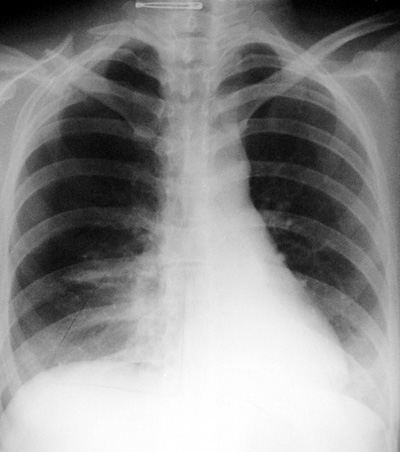|

|
Rib Fracture
Pathophysiology: The majority of rib fractures are the result of direct, or less commonly indirect trauma. Pathologic fractures occur with minimal trauma to a rib or ribs with underlying focal or diffuse disease. Often the rib fracture(s) are not as important as the associated trauma or complications and missing an uncomplicated fracture generally has no clinical impact as the treatment is symptomatic anyways.
The common etiologies of fractures are:
- Trauma: MVA, falls, etc…
- Pathologic Fractures: osteoporosis, metastatic disease, hyperparathyroidism, bone cysts, bone tumors including multiple myeloma
Complications/Associations of Fractures:
- Upper anterior rib fractures: considerable kinetic energy is needed to fracture the upper ribs, so with upper rib fractures look for serious or life threatening complications eg. tracheo-bronchial laceration or transection, vascular trauma to subclavian or great vessels of the neck
- Pneumothorax or tension pneumothorax
- Flail chest
- Local neurovascular injury eg. intercostal vessels, internal mammary vessels etc...
- Hemothorax
- Aortic trauma or dissection
- Mediastinal bleeding
- Associated spinal fractures
CXR Findings:
- Fractures best seen on frontal projection or oblique rib views
- Trace each visible rib or use magnification if needed
- Look for the complications even if a fracture is not seen
- Obtain rib views if clinically needed
- Take note of old fractures (fusiform enlargment of rib with sclerosis); may mean patient prone to rib trauma
Clinical/Radiologic Tip:
The complications, especially the potentially lethal ones are important. The fracture itself is secondary.
“Aunt Sophies”:
Really none. Don’t call old fractures new!
|